
Peek at New York City’s North Brother Island – where almost no one is allowed to visit
Nearby Manhattan is a little-known island that was abandoned nearly 55 years ago

Less than one mile (1.6km) from Manhattan – one of the priciest and most densely populated places in the world – exists a little-known island that people abandoned nearly 55 years ago.
“North Brother Island is among New York City’s most extraordinary and least known heritage and natural places,” wrote the authors of a recent University of Pennsylvania study about the location
The city owns the 22-acre (8.9 hectare) plot of land in the East River, which sits between the South Bronx’s industrial coast and Riker’s Island Correctional Center – New York City’s most infamous prison.

Almost no one is permitted on North Brother Island and its smaller companion, South Brother Island, except for birds. But even they don’t seem to want to live among its crumbling, abandoned structures (and contrary to Broad City’s depiction of the island, there is no working package pickup centre).
However, Business Insider recently took a tour as part of a TV shoot, whose producers obtained permission from the city to go.
Here’s what we saw and learned while romping around one of New York’s spookiest and most forgotten places. The only way to get to North Brother Island is by boat. Leaving from Barretto Point Park in the South Bronx is one of the quickest to get there.
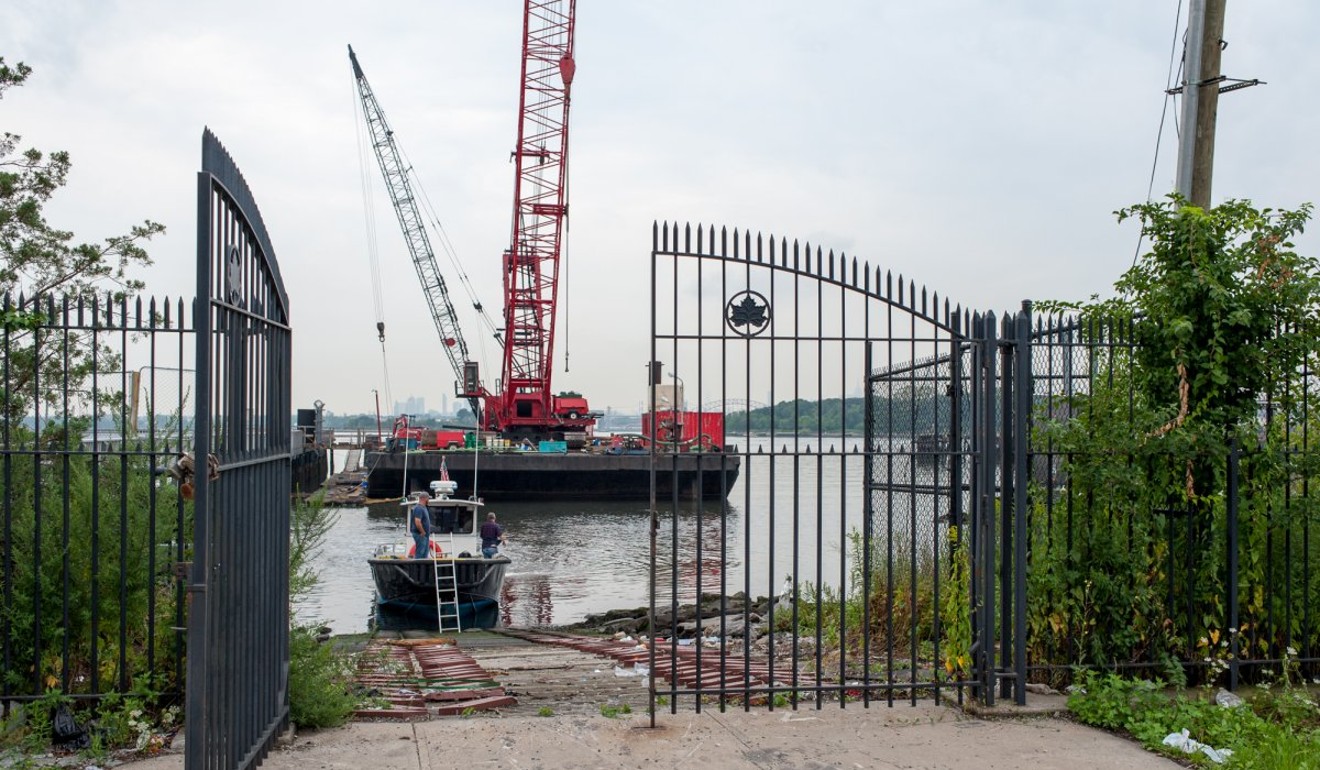

The East River was crawling with police, probably because Riker’s Island Correctional Institute is less than a mile away – and they are wary of anyone visiting North Brother Island.
No one is permitted to visit the island without permission along with an escort from the New York City Department of Parks and Recreation, which manages the site as a bird sanctuary. Pulling up to the island, we navigated around rotten dock supports. The ferry dock and its rusted derrick looked ready to collapse at any moment.
The island was first claimed in 1614 and inhabited in 1885, and its history is checkered with death, disease, and decay. In June 1904, for instance, a steamship called the General Slocum burst into flames and sank in the East River. Only 321 people survived, and the bodies of 1,021 people washed ashore for days.
The arc-shaped Hell Gate Bridge on the East River is visible from North Brother’s western shore.

The island’s buildings used to be powered by coal, which workers loaded onto this dock. Now it’s sinking, covered in kelp, and totally submerged at high tide. Sea levels could rise by as much as 2.5 feet in the next 35 years around New York City. If and when a large hurricane rolls through as the waters rise, the surges will swallow the island’s habitats, ecology, structures, and history.
After we arrived on shore, we set our equipment inside this sturdy old transformer vault. It was falling apart, like everything else on the island, but was one of the most stable structures with a functional roof – and rain clouds immediately began to threaten our day trip.

Streets and sidewalks are almost unrecognisable due to the overgrowth. Invasive kudzu vines, which come from Asia, crawl and infiltrate many nooks and crannies of the island. The island sub-canopy is covered in plant both small and large.
One of the first buildings I saw was the morgue (right). The fractured chimney of a coal-fired boiler room (left) is also visible from miles away.

Parks and Recreation officials do not let anyone into most buildings, since they are in a dangerous state of disrepair.
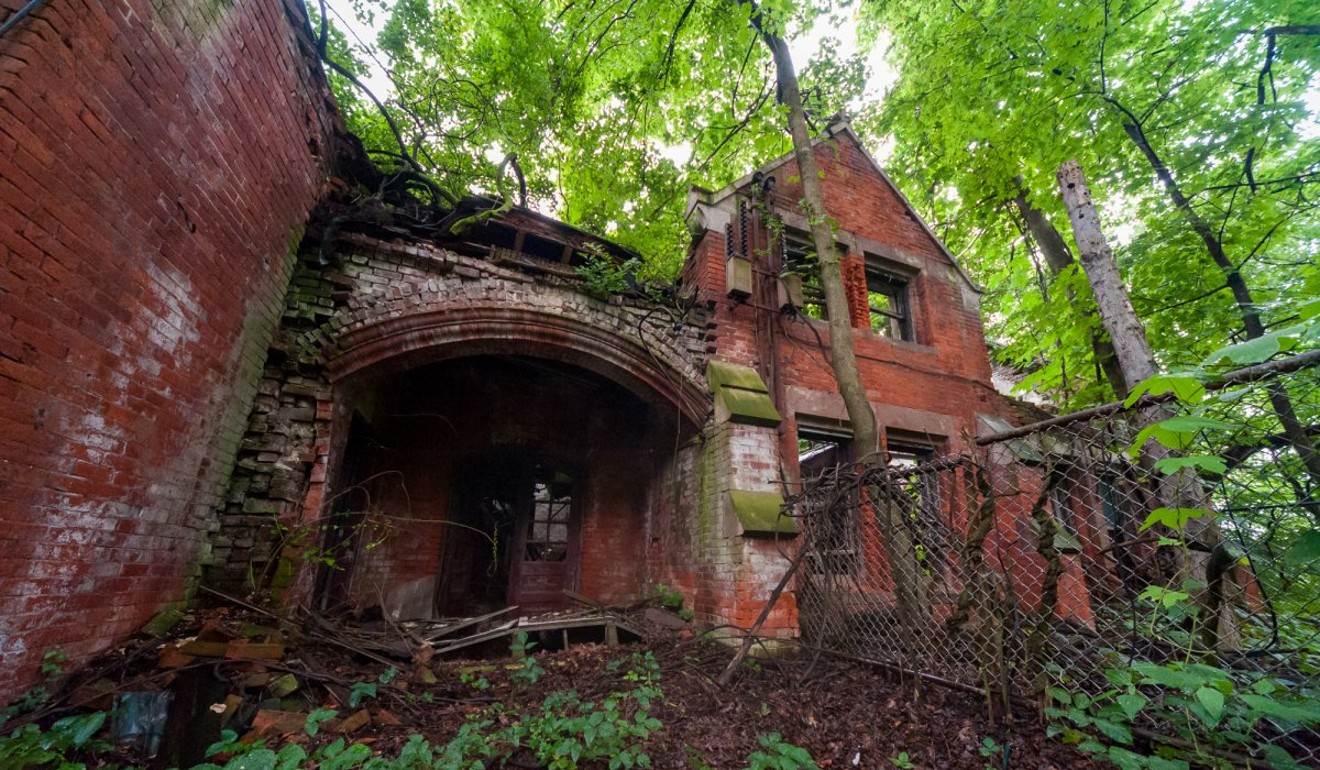
From the 1880s through 1943, the city quarantined people sick with highly contagious diseases on the island – including the infamous “Typhoid Mary” Mallon. Those who died were stored in the morgue.
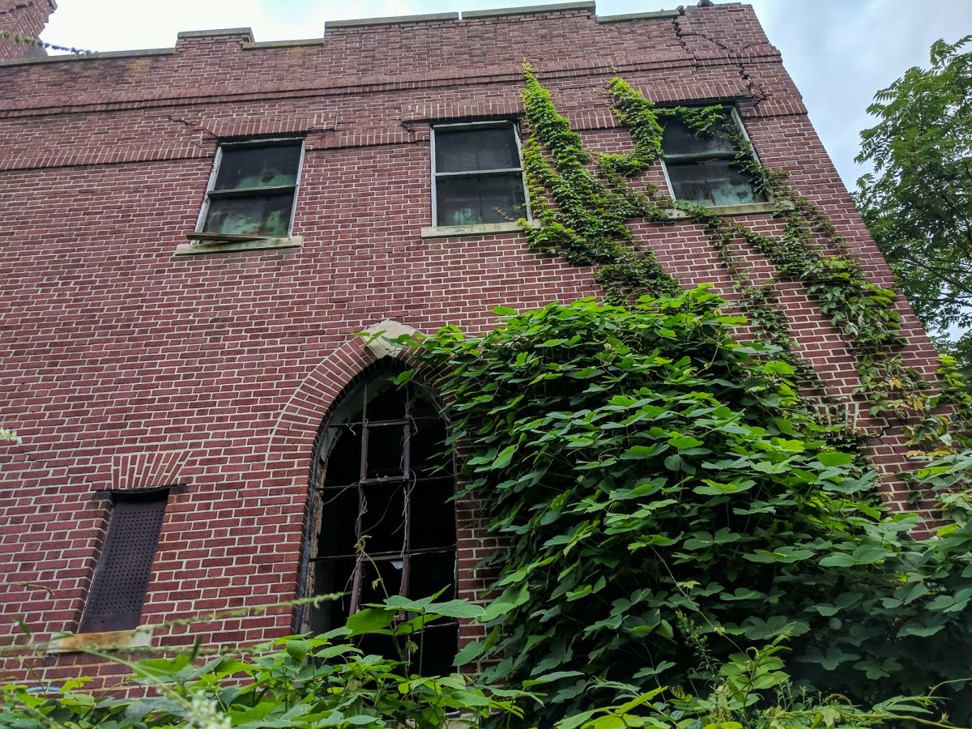
Much of the equipment was left when the island was abandoned in 1963. Some facilities are almost unrecognisable. Ivy has completely choked out this double tennis court.
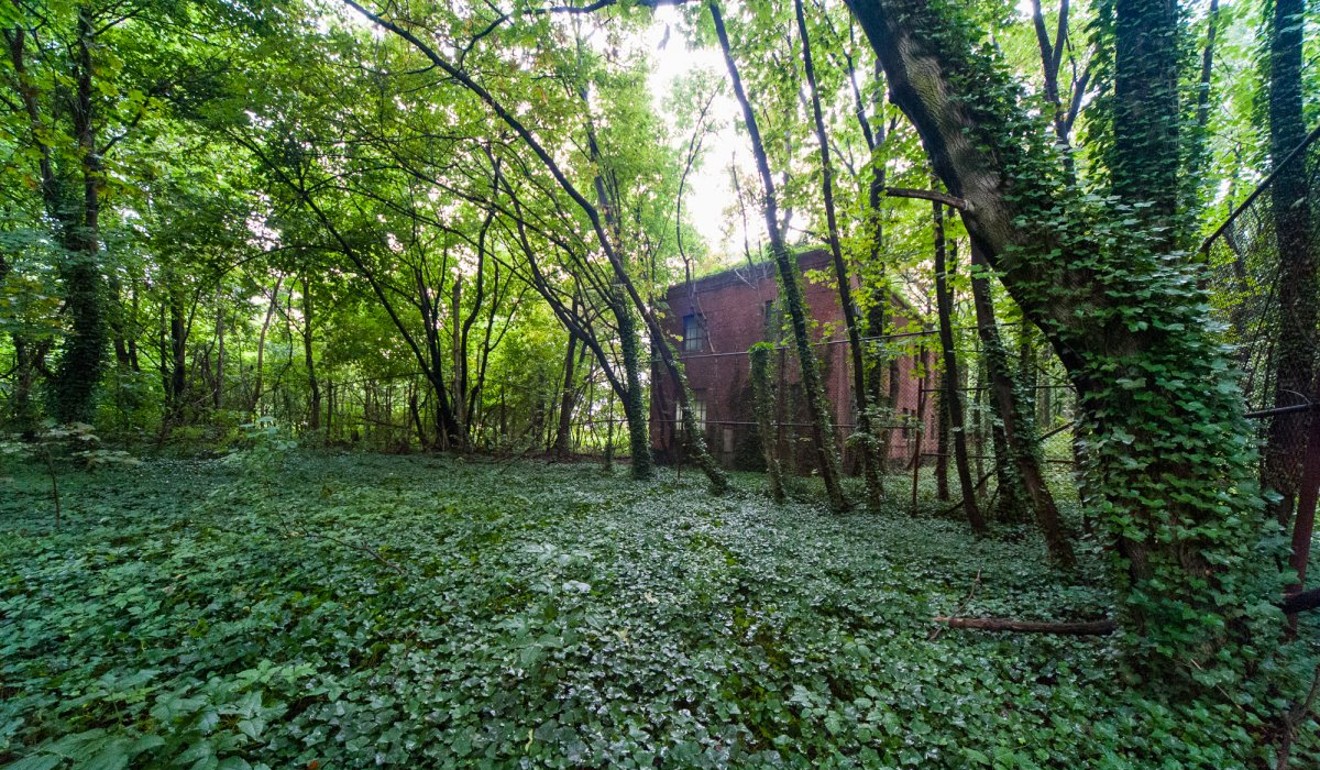
Rather than take the ferry each day, some hospital workers opted to live in the Nurse’s Home. Bath tubs have fallen through the ceiling of the 40,000-square-foot Victorian-style mansion, which was built in 1905. Coal-fired steam heated many of the island’s dwellings. The Staff House is one of the oldest and most dilapidated structures. It was constructed in 1885. It could collapse any day now.

Further down the main road is the Male Dormitory. It was also built in 1885, and has trees growing through its roof. The dormitory became a nursery school for veterans’ families who lived on the island during the post-World World II housing crisis, from 1946 through 1951.
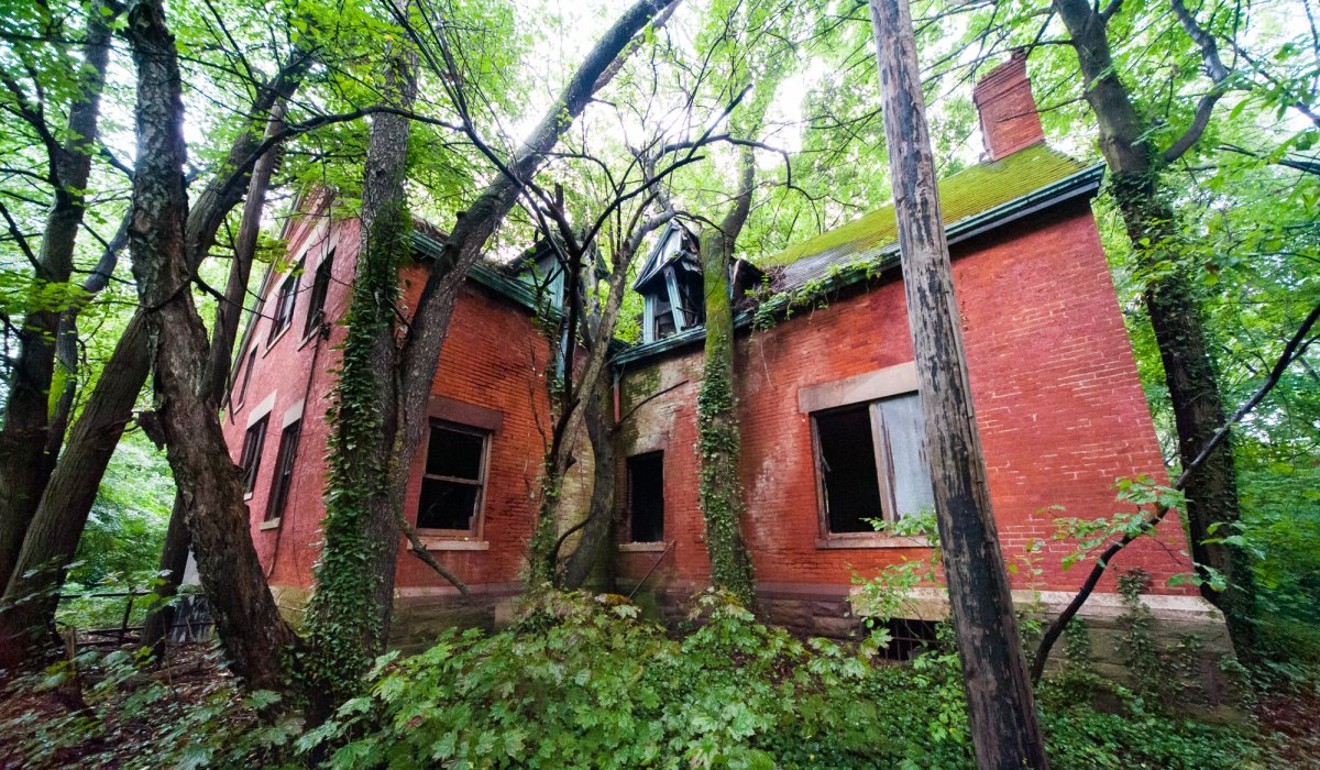
After 1951 and until the island’s abandonment, the building was used as a drug rehabilitation centre. So many structures hide among the wild vines, trees, and fronds. It feels like wandering around an post-apocalyptic playground at times.
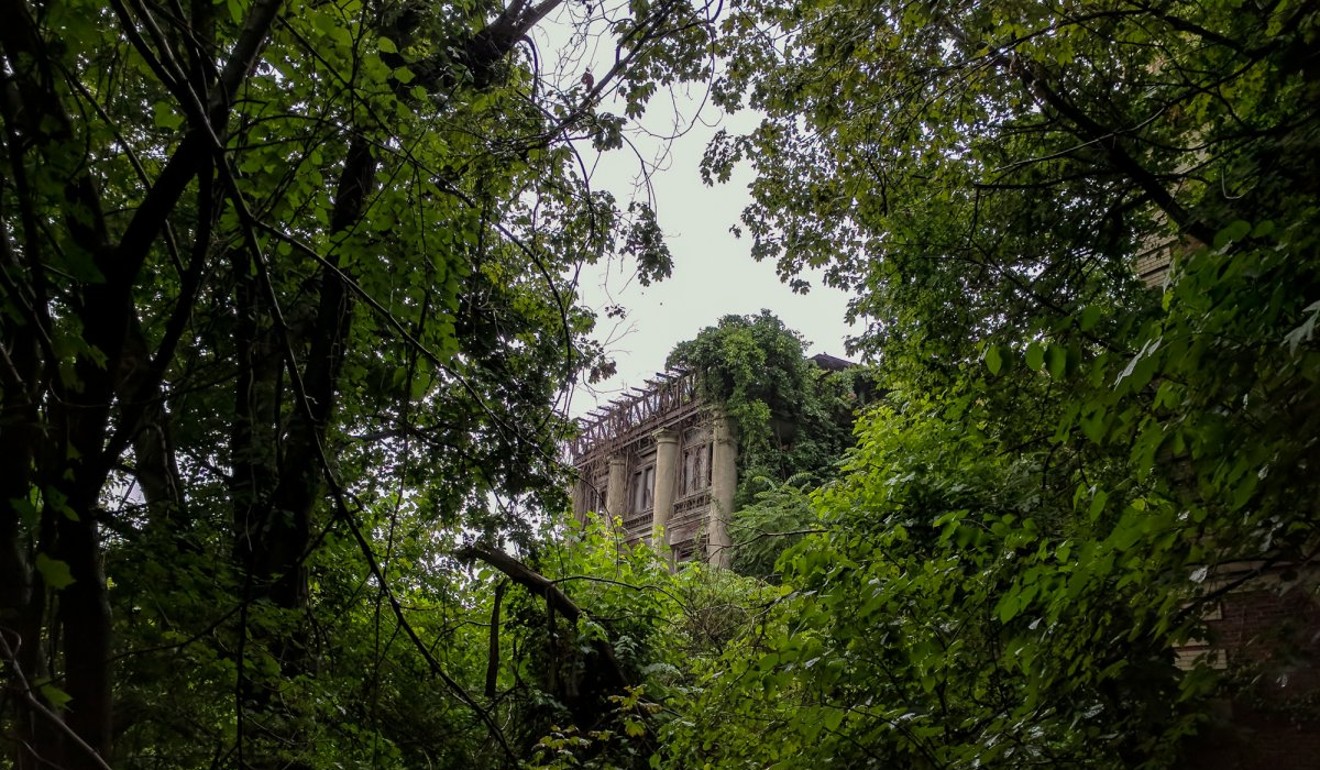
Few animals seem to live here, and a Parks and Recreation official said that mammals are practically non-existent – no rats, chipmunks, mice, and the like.

The largest building on the island is one of the last to be completed: The Tuberculosis Pavilion.

It is a sprawling four-story, 83,000-square-foot building that was designed to house people sick with tuberculosis, but then World War II broke out. The $1.2 million facility was finished in 1943 and never treated a tuberculosis patient; instead, it housed World War II veterans.

It is a large, looming, and creepy building that I wanted to explore, but couldn’t. But like many structures, I was able to peek through broken or missing windows. The island is a place few people would dare spend a night on, but it seemed more sad than spooky to me the more I explored it.

The structures, like this Physician’s Home, built in 1926, are on the verge of collapse. They were probably once beautiful, and might have even been useful today – had they been maintained.

The island struggled to find its purpose after a tuberculosis vaccine emerged in 1943, and soldiers found places to live on the mainland. The island tried to reinvent itself as a rehabilitation camp for troubled teens, from 1952 through 1963. But patients didn’t get the help they needed when returning home after three- to five-month stays. The programme was considered a failure.
Everyone left in 1963, and the city took custody of the island. A lack of management made it a looting grounds for vandals. To this day, the city has yet to figure out if and how it will let the public set foot there again.
Read the original story at Business Insider